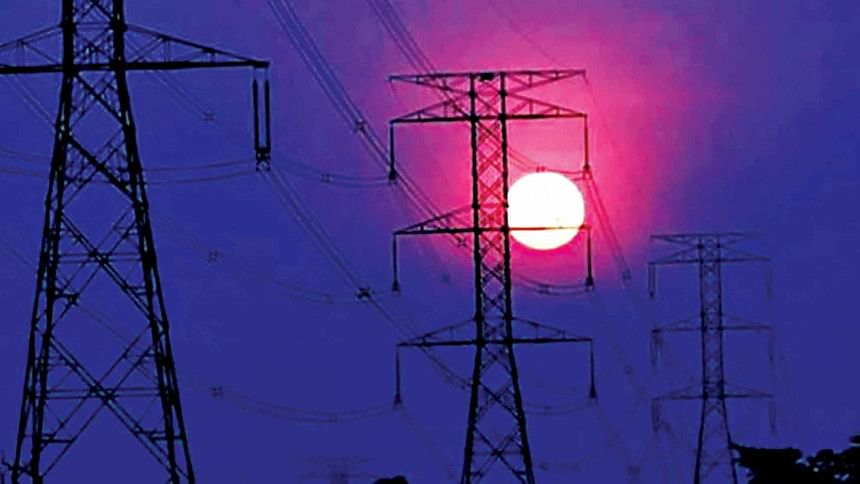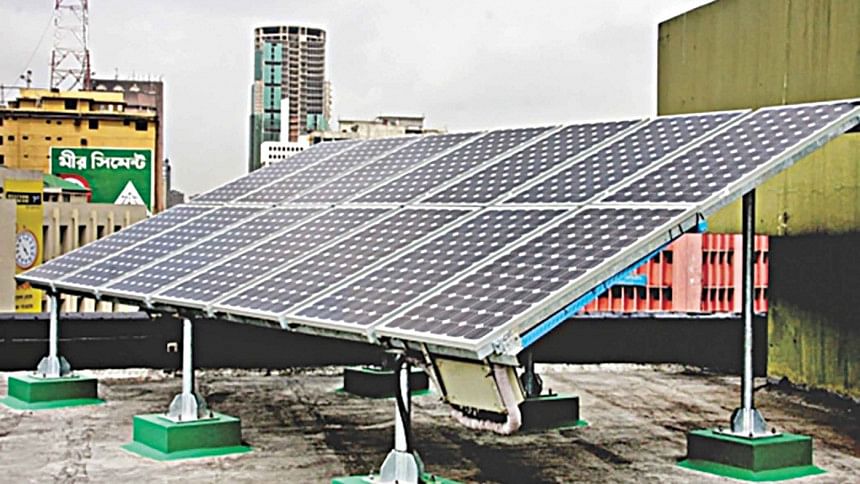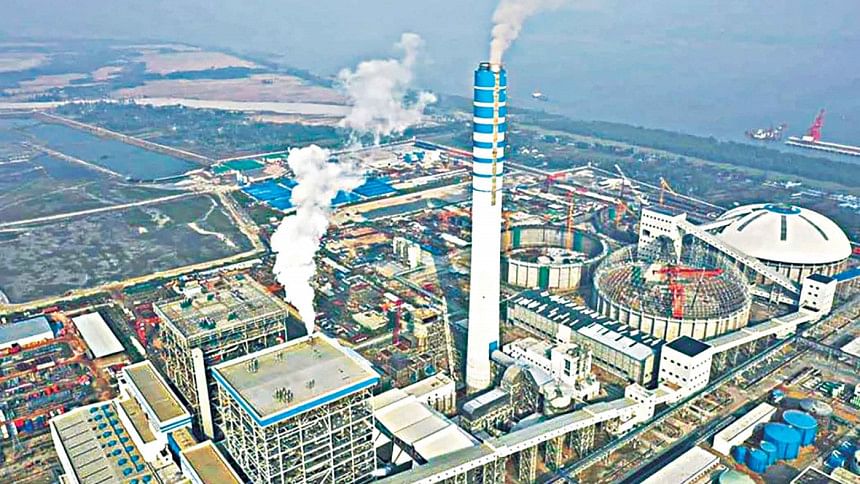Energy security and our future

Energy security is a difficult thing to analyse for a country because it is dependent on many factors. To assist in the analysis, researchers have identified four components of energy security: i) Availability; ii) Sustainability; iii) Affordability; and iv) Accessibility. To get an idea of how energy secure a country is, the country's situation with respect to the above four components need to be analysed.
AVAILABILITY
In terms of availability, Bangladesh's energy security may be rated as moderate. Availability has two aspects: i) Domestic Resources; and ii) Fuels supply infrastructure and management. In terms of domestic resources, Bangladesh's energy security position has always been poor. This is because compared to its large population, its fossil fuel resources were always very small. Nevertheless, how well the limited resources are utilised is a key issue for energy security.

To tackle gas shortage opting for the easy solution of importing LNG and shirking responsibility of finding new gas is not in the best interest of the country. Petroleum geologists and engineers, who have good knowledge of the basins in Bangladesh, are emphatically reiterating that more gas can be found. In the last 10 years, land-based exploration has been minimal and deep-sea exploration has been practically non-existent. After an initial spurt of exploration activities, the government seems to have given up on finding gas. Even though we are hearing of programmes to gear up exploration, very little activity is evident. The government is very short of funds, and therefore, is averse to the idea of putting money into high-risk ventures, but the government must realise that gas exploration is a long-term investment. We have been enjoying a success ratio of 1:3 for a long time. The days of high success rate with gas exploration are gone. Gone also are the days of finding large reserves. We have to aim for small reserves that are difficult to find. Thus, we have to look for stratigraphic traps because all the prospective anticline traps have probably all been drilled. To find gas in Bangladesh we have to be prepared now for a success ratio of 1:10. This means that out of ten (10) exploratory wells, nine (9) will be dry.
Our high-quality coal has the potential of supplying at least 10,000 MW of electricity for 20 years. Yet we have left it underground. Vague objections from environmentalists and other vested quarters have prevented us from mining our coal. Using imported coal certainly results in lowering of energy security. Not only will the cost of electricity generated be high, but also the logistical challenges of importing large quantities of coal may prove to be in some cases insurmountable.
Until recently, energy security was tied to a country's reserves of oil, gas and coal—more the reserves of fossil fuels, the more energy secure was the country. That notion is beginning to change rapidly as more and more countries begin to realise the potential of renewable energy. The sharp decline in the cost of renewable energy is making many countries—both developed and developing—self-reliant in electricity. Even a decade back the high cost of renewable energy meant that only rich nations could afford the luxury of using electricity generated from renewable energy. In the last decade, China and India have made great strides in renewable electricity generation. In India, the price of utility scale solar electricity has come down below 4 cents per kWh—that is comparable to nuclear, hydro or coal. Such drastic reduction in price has been possible due to innovative ideas incorporated into the solar PV implementation models. Similarly, China has achieved tremendous success in harnessing wind energy. Wind energy in many countries has become cheaper than all forms of conventional energy. These developments have brought renewable energy into the mainstream, and therefore, can be considered as a form of energy that provides energy security. The question naturally arises—how does Bangladesh fare with respect to renewable energy? In a straightforward conventional evaluation, the prospect does not look bright. The principal reason for this is the non-availability and price of land. Despite government efforts, less than 50 MW of grid-tied solar power plants have been set up. In India at tariffs of 6-7 cents per kWh, thousands of megawatts of solar power plants can be built. In Bangladesh, even offers of 12-14 cents per kWh have failed to induce private sector to build solar power plants.
One of the main barriers to developing solar PV electricity to a meaningful extent is the restriction that no agricultural land can be used for solar energy projects. While this is an excellent measure linked to food security, it severely limits utility scale solar PV projects because land holdings are small, and to get a contiguous tract of land becomes nearly impossible. Projects proponents are facing difficulties in setting up even 50 MW solar parks. If the government allows a small percentage of land, say 20 percent, in a project to be agricultural land, this limitation can be overcome. The effect on food security even if 10,000 MW of solar PV parks are developed will be minimal. Moreover, the financial and energy security benefits will be at least five times greater. In a globalised world, food security is not a dominant issue.

For Bangladesh to develop renewable energy, innovative thinking is required. Since land is expensive, systems have to be devised such that the land can have multiple uses. New technologies are close to commercialisation where agriculture is possibly below the solar panels. Solar cells to produce electricity use a narrow band of the electromagnetic spectrum. The rest of the spectrum is dissipated as heat and thus wasted. The unused part of the spectrum is precisely what plants need. The traditional solar panels completely block sunlight creating a shade underneath, where plants cannot grow or thrive. The novel transparent type panels allow the electromagnetic spectrum to be used by plants to pass through. The other innovative way to harness solar electricity is to use the wetlands. Panels mounted on stilts can harness solar energy leaving the wetland underneath undisturbed. Bangladesh may be short of land but being a riverine country, there is no shortage of water bodies. To harness solar energy using PV panels in Bangladesh it is better to focus on small units rather than utility scale units. There is an abundance of fallow land and "chars" that can be utilised for this purpose. Most of these strips of land cannot support utility scale solar power plants of 100+ MW, but units of 10-20 MW size can easily be built.
Of course, these innovative ideas will not give cheap power, but it must be clearly understood that once Bangladesh has opted for import dependent power generation, cheap power is no longer possible. Electricity in Bangladesh will always be 25-50 percent more expensive than that of the world average. If we accept that reality, then renewable electricity can be a viable option for Bangladesh. If we focus on conservation and energy efficiency, then the high cost of electricity can be offset to the extent that Bangladesh can compete in the international marketplace with products made using renewable electricity.
With respect to renewable electricity, Bangladesh can also explore wind and biomass. Even though the prospect of wind energy does not appear to be promising, there are ways to harness wind energy even at difficult locations. Novel design turbines placed high enough can harness wind energy even under the low wind speed conditions. It is difficult to put a number on the capacity that may be developed but with incentivised pricing and using innovative models, up to 1,000 MW should be possible. Similarly, biomass energy should also be able to give Bangladesh 1,000 MW of electricity. As the rural population shift to modern fuels such as kerosene and LPG for cooking, significant quantities of biomass will be available for energy projects. These may not be much in terms of the government's planned 40,000+ MW by 2030, but these are domestic resources, and hence, tremendously enhance energy security.
If we analyse the performance from the point of view of constructing facilities for fuels import and improving the internal fuels handling and transportation infrastructure, the government has done a good job. By opting for two FSRUs and a land-based regasification plant for gas import and three sea channels (at Matharbari, Payra and Ramphal) for coal import, the government is ensuring the future smooth supply of gas and coal. The rate at which oil handling and transportation infrastructure was developed to supply furnace oil and diesel to power plants all over the country is truly commendable. Building power plants to get rid of load shedding and take the generation capacity from 6,500 MW to over 20,000 MW was also a great success. Probably the biggest success of this government is the power import from India. If this can be augmented with hydropower import from Nepal and Bhutan, then we would certainly achieve greater energy security. The addition of nuclear power will no doubt bring fuel diversification to the future energy mix for power generation giving greater energy security, but concerns over accidents, fuels supply security and disruption and radioactive waste disposal will continue to plague us for a long time.
SUSTAINABILITY
The robustness of the economy and the energy system determines the sustainability of energy security. In terms of economic growth, Bangladesh has achieved a GDP growth of over 8 percent last year. If such growth can be continued, then energy security will be ensured because what is important is whether the government has enough funds to import fuels and maintain their supply. In terms of energy infrastructure, the assessment is mixed. While the electricity generation facilities are excellent, the transmission and distribution infrastructure are below par. The gas network is also not up to the mark. The full quantity of contracted LNG that can be supplied from the two FSRUs cannot be brought to the demand centres because a much-needed pipeline has not been completed. If industrialisation is to spread throughout the country, gas infrastructure must be expanded and improved. The economic growth that we are experiencing is principally public sector infrastructure construction driven boosted by remittance and the growth of the agriculture sector. There can be no doubt that for growth of the economy industrialisation is essential. Recent data shows that industrialisation has dramatically slowed down, the banking sector and the share market are both under great stress. These must be rectified if sustainability of energy security is to be achieved.

AFFORDABILITY
In terms of affordability, the situation is far from being desirable. The prices of both electricity and gas have increased several times in the last 4-5 years. If this trend continues then the prices of gas and electricity will hurt industrial growth. The government however must be praised for providing a lifeline tariff for electricity to the poorer customers. The grid has surplus capacity, but industries continue to use captive generation, and have no eagerness to buy from the grid. Large industries, those that have captive generation, have categorically told BPDB that they are not interested in purchasing unreliable electricity. Thus, the best customers are outside the grid. This has serious financial implications for BPDB.
ACCESSIBILITY
The efforts of the government to provide electricity to 100 percent of the population has a very positive implication for accessibility. Today, in any corner of Bangladesh, people can get electricity, diesel/kerosene and LPG. These are great success stories for the government. Even though the drive for 100 percent electrification has caused diversion of funds from projects to improve the transmission and distribution network for electricity, it is still praiseworthy because providing electricity to rural people has a huge impact on improving accessibility to energy services, which is a big issue in developing countries.
In the final analysis, Bangladesh's energy security is a mixed bag—some achievements have been made but large gaps still exist. The future scenario will depend on how well Bangladesh tackles the threats. The probable issues that may pose as threats are: i) international prices of LNG and coal; ii) the stability of supply which in turn will depend on world stability especially that of the Middle East; iii) economic growth of the country; and iv) good governance both of the country and the energy sector. A very important aspect of governance of the energy sector is manpower development for the nuclear and the supercritical coal power plants.
Bangladesh has opted for a predominantly import based energy sector. The proponents of this strategy cite examples of South Korea and Japan. To what extent such comparisons are justified is highly debatable, but one thing is certain, if we falter in achieving economic growth, our ability to import fuels will be greatly hampered leading to diminished energy security.
Ijaz Hossain is professor, Chemical engineering Department, Buet.

 For all latest news, follow The Daily Star's Google News channel.
For all latest news, follow The Daily Star's Google News channel. 



Comments